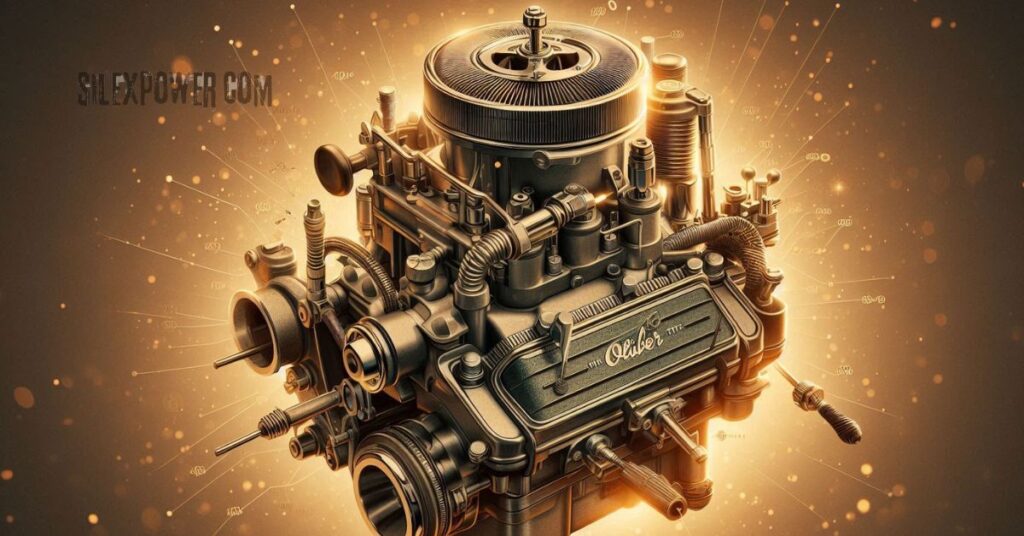Introduction
Many vintage cars depend on the Oliver Carburetor TXF 775 because of its dependability and efficiency. This carburetor is essential if you enjoy old cars or work as a car restorer. It is essential for ensuring that the proper mixture of air and fuel is delivered to your engine for optimal operation. The TXF 775 carburetor is popular among auto enthusiasts because of its precise and long-lasting construction.
The Oliver Carburetor TXF 775 has established itself as a hallmark of excellence in the field of antique car restoration over time. You can maintain your automobile’s peak performance by knowing how this carburetor operates, whether you’re repairing an old car or are just interested in how it operates. From its features and history to upkeep and troubleshooting assistance, this post will cover all you need to know about the Oliver Carburetor TXF 775. Come with me as we explore this crucial aspect of classic car engineering!
History and Development
Origins of the Oliver Carburetor
A lengthy series of carburetors made specifically for Oliver tractors and vintage automobiles includes the Oliver Carburetor TXF 775. Oliver carburetors, which are renowned for their dependability and quality, became widely used in industrial and agricultural machinery in the middle of the 20th century. Oliver’s efforts to produce reliable and effective carburetor systems for its higher-performance tractors and vehicles included the development of the TXF 775.
As automotive technology advanced, the TXF 775 emerged as a crucial part for restorers of vintage cars who want to keep their vehicles in their original condition.
Evolution in Automotive Engineering
The automotive innovations of the time are reflected in the TXF 775. In the middle of the 20th century, carburetors saw substantial modifications that improved fuel management and economy. These improvements are demonstrated by the Oliver Carburetor TXF 775, which offers superior performance and fuel delivery. Its innovative design helped cars operate more smoothly and efficiently.
Technical Specifications
Design Features
Several key design elements of the Oliver Carburetor TXF 775 contribute to its efficient operation. It has a float chamber that keeps the fuel level steady. The engine’s air and fuel are mixed with the help of the venturi tube. The needle valve also regulates the flow of fuel, guaranteeing the proper fuel mixture for effective engine operation.
Material and Build Quality
The TXF 775 is constructed from premium materials that are resistant to the severe conditions found in the engine bay. Because of its dependability and durability, it is still widely used by restorers of vintage cars today. Its robust construction ensures long-lasting performance by preventing wear and tear.
Compatibility
Although Oliver tractors frequently utilize this carburetor, some older cars can also use it. It is a flexible option for restorers because it suits engines that require a comparable air/fuel ratio. This carburetor might be the ideal choice if you’re working on a vintage car from the middle of the 20th century.
Performance Metrics
The reliable performance of the Oliver Carburetor TXF 775 is well-known. It increases engine efficiency by delivering gasoline consistently. Drivers should anticipate increased power overall, smoother acceleration, and better engine idling. It is a well-liked option for auto enthusiasts refurbishing vintage cars because of these features.
Functionality and Operation
Role in Engine Performance
The Oliver Carburetor TXF 775 is essential to the engine’s operation since it mixes fuel and air in the proper ratios. Achieving the optimal power output, fuel efficiency, and seamless operation all depend on this balance. It is highly appreciated by historic automobile restorers since a well-maintained TXF 775 guarantees that the engine operates smoothly under a variety of driving circumstances.
Maintenance Requirements
For the Oliver Carburetor TXF 775 to last a long time and perform at its best, maintenance is essential. Regular upkeep must consist of:
- The carburetor should be cleaned on a regular basis to keep the fuel jets clear of dirt and debris.
- Examining the float chamber for obstructions or fuel leaks.
- Examining the throttle valve for damage.
- Replacing damaged gaskets or seals to stop fuel or air leakage.
By ensuring that the carburetor keeps performing at its peak, proper maintenance extends the life of the carburetor and the engine it powers.
Common Issues and Troubleshooting
Identifying Common Problems
Over time, problems may arise with the Oliver Carburetor TXF 775, just as with other mechanical components. Among the typical issues are:
Fuel Leaks: Damaged gaskets or deteriorated seals may cause leaks.
Inconsistent Idling: An indication of issues with the air/fuel ratio, frequently brought on by clogged jets or unclean parts.
Poor Acceleration: May be caused by a blocked venturi tube or a malfunctioning needle valve.
Diagnostic Procedures
The following actions can assist in troubleshooting if you’re experiencing any of these problems:
Fuel Leaks: Check all gaskets and seals for wear or cracks. Replace any components that are broken.
Inconsistent Idling: Clean the carburetor and look for obstructions in the airways and fuel jets.
Poor Acceleration: Look for any indications of wear or obstruction on the venturi tube and needle valve.
Restoration and Replacement
Sourcing Authentic Parts
It might be difficult to locate genuine Oliver Carburetor TXF 775 parts, particularly because older parts are frequently no longer manufactured. However, finding or reassembling historic parts is the specialty of many classic car restoration firms. To keep your restoration project authentic, you should seek out trustworthy vendors who provide original or superior reproduction parts.
Rebuilding Services
You can rebuild your current TXF 775 carburetor if you can’t get a new one. Cleaning, fixing worn-out parts, and swapping out gaskets and seals are all common rebuilding services. This might be a reasonably priced method of getting the carburetor operating at its peak efficiency again.
Installation Guidelines
Fuel and air line alignment, as well as the smooth operation of the throttle and choke systems, must all be carefully considered while installing the TXF 775 carburetor. To prevent installation mistakes, it is usually advised to refer to the vehicle’s handbook or get advice from a qualified technician when installing the carburetor.
User Experiences and Testimonials
Enthusiast Stories
Numerous owners of vintage cars have commended the Oliver Carburetor TXF 775 for its dependability and efficiency. The TXF 775 has been used to rehabilitate old automobiles, and enthusiasts frequently share their comments about how the cars’ general driving pleasure and engine responsiveness have improved.
Performance Reviews
The carburetor’s steady fuel supply and seamless operation are frequently praised in customer reviews. The TXF 775 offers a combination of heritage and contemporary efficiency, and owners of classic cars love how it makes their old engines run like new.
Modern Alternatives and Upgrades
Comparative Analysis
Classic vehicle aficionados still prefer the Oliver Carburetor TXF 775, but newer carburetors and fuel injection systems provide better performance and efficiency. The TXF 775 is still the best option, though, for people who are dedicated to preserving the true and antique feel of their cars.
Upgrade Options
Some restorers think about switching to contemporary carburetors while keeping the vintage appearance if they want to improve performance. It’s crucial to balance the benefits of improved performance with the need for authenticity, though.
Conclusion
A vital component of many vintage cars, the Oliver Carburetor TXF 775 is renowned for its dependability, accuracy, and efficiency. Knowing the function and importance of this carburetor will help you preserve the originality and functionality of your antique car, whether you’re a car restorer or just a hobbyist. You can guarantee that your car will continue to function well for many years to come by taking care of it, finding the appropriate parts, and being able to troubleshoot problems.



